-
 Bitcoin
Bitcoin $119300
2.40% -
 Ethereum
Ethereum $4254
-0.20% -
 XRP
XRP $3.184
-1.38% -
 Tether USDt
Tether USDt $1.000
0.00% -
 BNB
BNB $803.9
0.58% -
 Solana
Solana $183.1
1.50% -
 USDC
USDC $0.0000
0.01% -
 Dogecoin
Dogecoin $0.2339
-2.87% -
 TRON
TRON $0.3384
0.88% -
 Cardano
Cardano $0.8018
-0.29% -
 Hyperliquid
Hyperliquid $45.13
3.14% -
 Chainlink
Chainlink $22.10
0.96% -
 Stellar
Stellar $0.4439
-0.94% -
 Sui
Sui $3.875
-0.73% -
 Bitcoin Cash
Bitcoin Cash $570.7
0.24% -
 Hedera
Hedera $0.2589
-2.90% -
 Ethena USDe
Ethena USDe $1.001
-0.01% -
 Avalanche
Avalanche $23.83
-1.73% -
 Litecoin
Litecoin $123.8
2.61% -
 Toncoin
Toncoin $3.351
-1.13% -
 UNUS SED LEO
UNUS SED LEO $9.103
1.13% -
 Shiba Inu
Shiba Inu $0.00001356
-1.40% -
 Uniswap
Uniswap $10.93
-0.19% -
 Polkadot
Polkadot $4.057
-1.97% -
 Dai
Dai $1.000
0.01% -
 Cronos
Cronos $0.1646
4.66% -
 Ethena
Ethena $0.7974
8.11% -
 Pepe
Pepe $0.00001208
-2.89% -
 Bitget Token
Bitget Token $4.445
-1.70% -
 Monero
Monero $268.8
-2.00%
Bitcoin ETF: A Step-by-Step Guide to Buying and Selling
A Bitcoin ETF lets investors gain exposure to Bitcoin’s price without owning it directly, offering regulated, liquid access via traditional brokerages.
Aug 10, 2025 at 11:29 pm
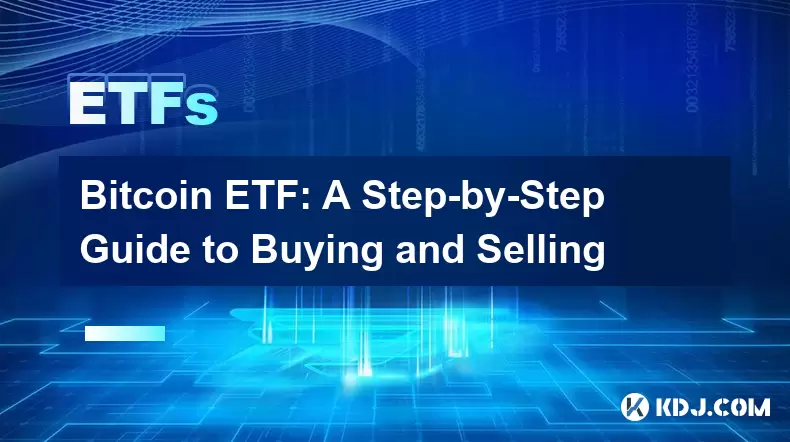
Understanding the Bitcoin ETF Concept
A Bitcoin ETF (Exchange-Traded Fund) is a financial product that allows investors to gain exposure to Bitcoin’s price movements without directly owning the cryptocurrency. Instead of managing private keys or using digital wallets, investors can buy shares of a Bitcoin ETF through traditional brokerage accounts. These funds are typically backed by actual Bitcoin holdings or futures contracts, depending on the structure approved by regulatory bodies like the U.S. Securities and Exchange Commission (SEC). The primary advantage of a Bitcoin ETF is that it brings regulated, accessible, and liquid exposure to Bitcoin for mainstream investors.
There are two main types of Bitcoin ETFs: spot Bitcoin ETFs and futures-based Bitcoin ETFs. Spot ETFs hold actual Bitcoin and aim to track the real-time market price. Futures-based ETFs, on the other hand, invest in Bitcoin futures contracts traded on regulated exchanges such as the CME. The distinction is crucial because spot ETFs reflect current Bitcoin prices more accurately, while futures ETFs may be influenced by market expectations and roll costs.
Regulatory approval plays a significant role in the legitimacy and adoption of Bitcoin ETFs. The SEC approved the first spot Bitcoin ETF in the United States in January 2024, marking a pivotal moment for crypto institutionalization. These ETFs are subject to standard securities laws, including disclosure requirements, auditing, and investor protections, which enhances their credibility.
Selecting a Brokerage Platform
To buy or sell a Bitcoin ETF, you must use a brokerage platform that supports ETF trading. Not all brokers offer access to every Bitcoin ETF, so it’s essential to verify availability before opening an account. Look for platforms that are SEC-registered, offer low trading fees, and provide user-friendly interfaces.
- Confirm that the broker supports ETF trading, particularly the specific Bitcoin ETF you're interested in (e.g., ARKB, IBIT, FBTC).
- Ensure the platform allows commission-free trades or charges minimal fees per transaction.
- Check whether the broker provides real-time pricing data and research tools for informed decision-making.
- Verify account funding options such as bank transfers, ACH, or wire transfers.
Popular platforms like Fidelity, Charles Schwab, ETRADE, and Robinhood* now list major Bitcoin ETFs. Some require a minimum deposit, while others allow fractional share purchases, making it easier for small investors to participate.
Opening and Funding Your Investment Account
After selecting a suitable brokerage, the next step is to open and fund your investment account. This process usually takes a few minutes to a few business days, depending on verification procedures.
- Provide personal identification documents such as a driver’s license or passport.
- Enter your Social Security Number (SSN) or equivalent tax identification for compliance.
- Complete Know Your Customer (KYC) and Anti-Money Laundering (AML) checks.
- Link a bank account or debit card to fund your brokerage account.
Once your account is verified, initiate a deposit. ACH transfers are common and typically take 1–3 business days to settle. Some brokers offer instant funding for a fee. Ensure your funds are fully settled before placing a trade, as unsettled cash may restrict your ability to execute orders.
Placing a Buy Order for a Bitcoin ETF
With a funded account, you can now purchase shares of a Bitcoin ETF. Begin by searching for the ETF using its ticker symbol (e.g., IBIT for iShares Bitcoin ETF). Review the current market price, bid/ask spread, and daily volume to assess liquidity.
- Choose the order type: Market order executes immediately at the best available price, while a limit order allows you to set a maximum price you’re willing to pay.
- Enter the number of shares or dollar amount you wish to invest.
- Review transaction details, including estimated fees and total cost.
- Confirm and submit the order.
For example, if you want to buy $500 worth of FBTC at $25 per share, enter the amount and select “fractional shares” if your broker supports it. The trade will execute once the market conditions match your order parameters. After execution, the shares will appear in your portfolio.
Monitoring and Selling Your Bitcoin ETF Shares
Once you own Bitcoin ETF shares, you can monitor their performance through your brokerage dashboard. Prices fluctuate based on Bitcoin’s market value, investor sentiment, and macroeconomic factors. Set up price alerts or use technical analysis tools if available.
When you decide to sell:
- Navigate to your portfolio and select the Bitcoin ETF you own.
- Click “Sell” and choose between a market order or limit order.
- Enter the number of shares or dollar value to liquidate.
- Review fees and estimated proceeds before confirming.
Selling triggers a capital gains tax event if the shares were sold at a profit. Short-term gains (held under one year) are taxed as ordinary income, while long-term gains (over one year) qualify for lower tax rates. Proceeds from the sale are typically available in your brokerage account within T+2 settlement time (two business days after the trade date).
Tax and Regulatory Considerations
Investing in a Bitcoin ETF involves tax obligations similar to other securities. Brokers issue Form 1099-B at year-end, detailing your capital gains and losses. You must report these on your tax return using Schedule D and Form 8949 if required.
- Dividends, if any, are taxed as ordinary income.
- Wash sale rules apply: selling at a loss and repurchasing within 30 days disallows the loss for tax purposes.
- Non-U.S. investors should consult local tax laws, as treatment may differ.
Regulatory oversight ensures that Bitcoin ETFs comply with financial reporting standards. However, unlike holding Bitcoin directly, ETF investors do not have custody of the underlying asset. This means no exposure to private key risks, but also no direct control over the Bitcoin reserves.
Frequently Asked Questions
Can I convert my Bitcoin ETF shares into actual Bitcoin?
No, Bitcoin ETF shares represent ownership in the fund, not the underlying cryptocurrency. There is no mechanism to redeem shares for physical Bitcoin.
Are Bitcoin ETFs safer than buying Bitcoin on an exchange?
Bitcoin ETFs eliminate risks related to exchange hacks, wallet mismanagement, and private key loss. However, they are subject to market volatility, management fees, and counterparty risks associated with the fund issuer.
What are the typical expense ratios for Bitcoin ETFs?
Expense ratios vary by provider. For example, BlackRock’s IBIT has a 0.12% annual fee, while ARKB charges 0.21%. These fees are deducted automatically from fund assets.
Do Bitcoin ETFs pay dividends?
Bitcoin ETFs do not generate income like dividend-paying stocks. Any distributions are rare and typically result from minor interest earned on cash holdings or futures contract adjustments.
Disclaimer:info@kdj.com
The information provided is not trading advice. kdj.com does not assume any responsibility for any investments made based on the information provided in this article. Cryptocurrencies are highly volatile and it is highly recommended that you invest with caution after thorough research!
If you believe that the content used on this website infringes your copyright, please contact us immediately (info@kdj.com) and we will delete it promptly.
- BlockDAG's T6900 Crypto Presale Buzz: Is the $0.0016 Entry the Real Deal?
- 2025-08-11 09:08:47
- Animoca Brands' Cool Cats Investment: A Purr-fect Match for the NFT Future
- 2025-08-11 09:08:47
- XRP, Luminite Wallet, and DeFi Access: A New Era?
- 2025-08-11 09:08:47
- Dogecoin, SHIB Whales, and Meme Coins: What's the Latest?
- 2025-08-11 09:08:47
- Bitcoin's Wild Ride: Short Squeezes, $120K Dreams, and What It All Means
- 2025-08-11 09:08:48
- Crypto Treasury, Capital Shift, and Startup Raises: What's the Deal?
- 2025-08-11 09:08:48
Related knowledge

Bitcoin ETF: A Step-by-Step Guide to Buying and Selling
Aug 10,2025 at 11:29pm
Understanding the Bitcoin ETF ConceptA Bitcoin ETF (Exchange-Traded Fund) is a financial product that allows investors to gain exposure to Bitcoin’s p...
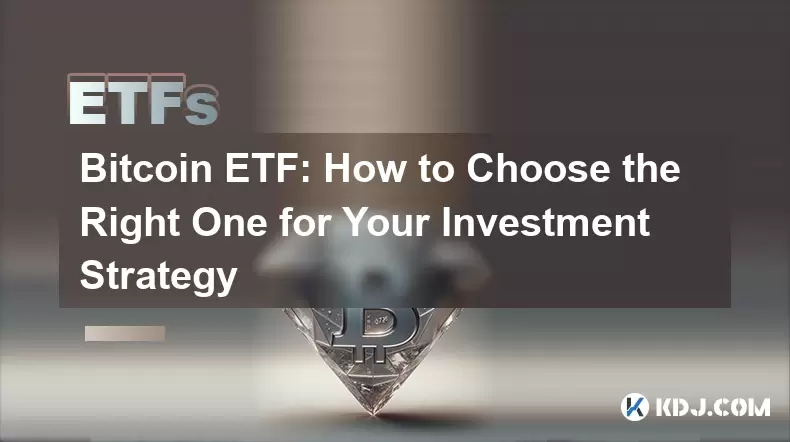
Bitcoin ETF: How to Choose the Right One for Your Investment Strategy
Aug 09,2025 at 11:49am
Understanding Bitcoin ETFs and Their Market RoleA Bitcoin ETF (Exchange-Traded Fund) is a financial product that tracks the price of Bitcoin without r...
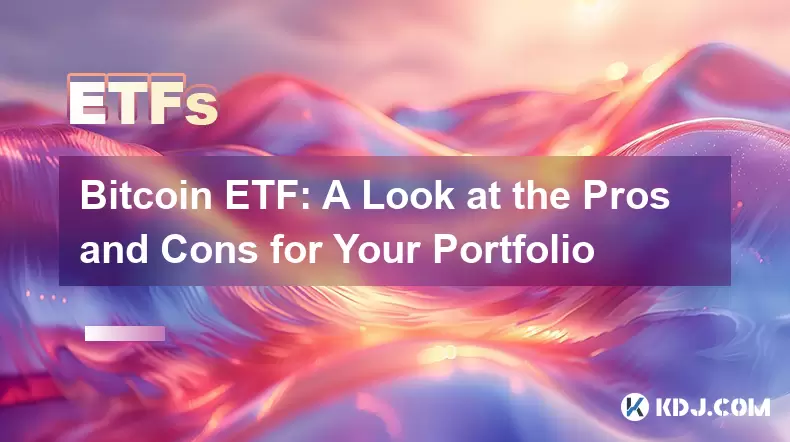
Bitcoin ETF: A Look at the Pros and Cons for Your Portfolio
Aug 10,2025 at 03:28pm
What Is a Bitcoin ETF and How Does It Work?A Bitcoin ETF (Exchange-Traded Fund) is an investment vehicle that trades on traditional stock exchanges an...
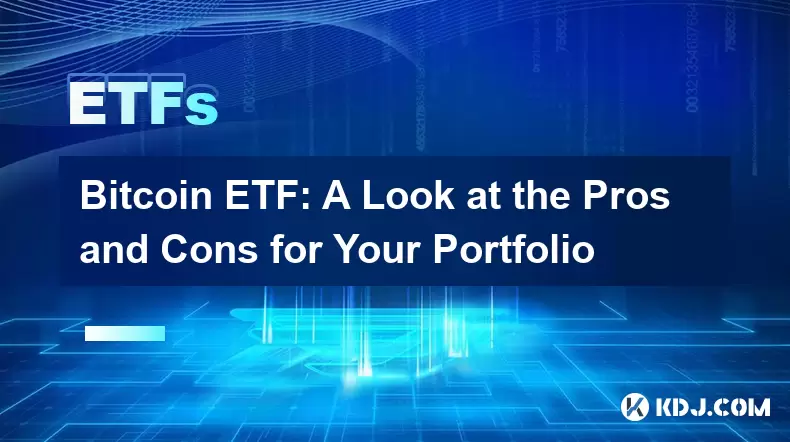
Bitcoin ETF: A Look at the Pros and Cons for Your Portfolio
Aug 08,2025 at 10:43am
Understanding Bitcoin ETFs and Their Role in InvestmentA Bitcoin Exchange-Traded Fund (ETF) is a financial product that allows investors to gain expos...
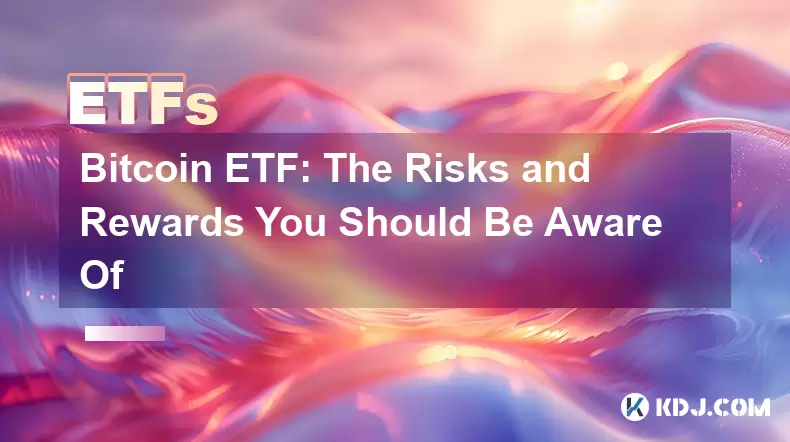
Bitcoin ETF: The Risks and Rewards You Should Be Aware Of
Aug 07,2025 at 03:07pm
What Is a Bitcoin ETF and How Does It Work?A Bitcoin ETF (Exchange-Traded Fund) is a financial product that tracks the price of Bitcoin and trades on ...
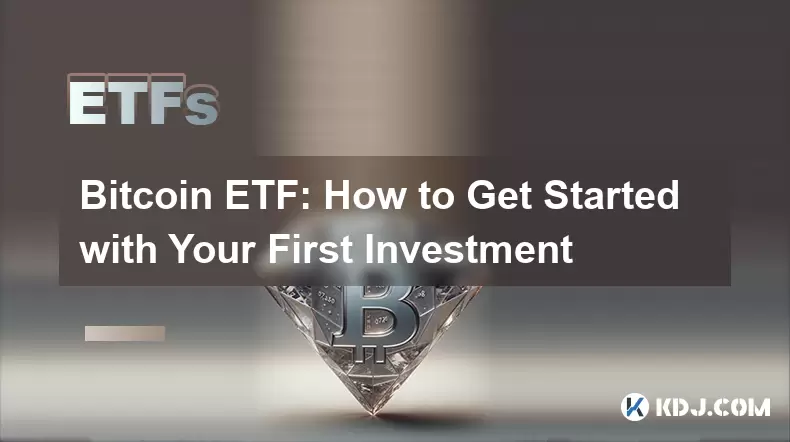
Bitcoin ETF: How to Get Started with Your First Investment
Aug 11,2025 at 01:07am
Understanding What a Bitcoin ETF IsA Bitcoin ETF (Exchange-Traded Fund) is a financial product that allows investors to gain exposure to Bitcoin’s pri...

Bitcoin ETF: A Step-by-Step Guide to Buying and Selling
Aug 10,2025 at 11:29pm
Understanding the Bitcoin ETF ConceptA Bitcoin ETF (Exchange-Traded Fund) is a financial product that allows investors to gain exposure to Bitcoin’s p...

Bitcoin ETF: How to Choose the Right One for Your Investment Strategy
Aug 09,2025 at 11:49am
Understanding Bitcoin ETFs and Their Market RoleA Bitcoin ETF (Exchange-Traded Fund) is a financial product that tracks the price of Bitcoin without r...

Bitcoin ETF: A Look at the Pros and Cons for Your Portfolio
Aug 10,2025 at 03:28pm
What Is a Bitcoin ETF and How Does It Work?A Bitcoin ETF (Exchange-Traded Fund) is an investment vehicle that trades on traditional stock exchanges an...

Bitcoin ETF: A Look at the Pros and Cons for Your Portfolio
Aug 08,2025 at 10:43am
Understanding Bitcoin ETFs and Their Role in InvestmentA Bitcoin Exchange-Traded Fund (ETF) is a financial product that allows investors to gain expos...

Bitcoin ETF: The Risks and Rewards You Should Be Aware Of
Aug 07,2025 at 03:07pm
What Is a Bitcoin ETF and How Does It Work?A Bitcoin ETF (Exchange-Traded Fund) is a financial product that tracks the price of Bitcoin and trades on ...

Bitcoin ETF: How to Get Started with Your First Investment
Aug 11,2025 at 01:07am
Understanding What a Bitcoin ETF IsA Bitcoin ETF (Exchange-Traded Fund) is a financial product that allows investors to gain exposure to Bitcoin’s pri...
See all articles

























































































